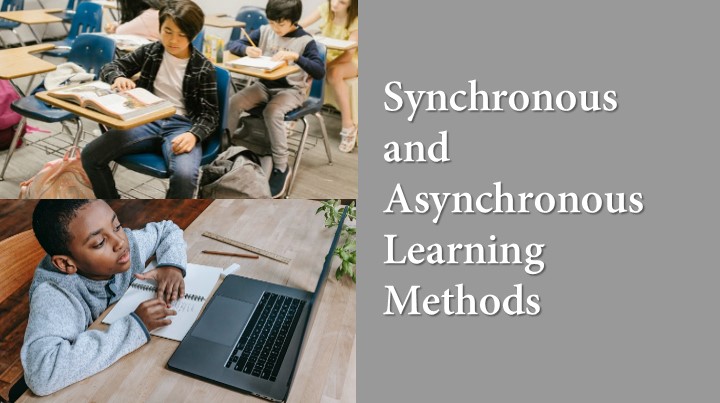Last Updated on April 22, 2023 by Uncle Pat Ugwu
Digital Games and of course games, in general, have different elements that make them an influential vehicle for human learning. They are usually organized for players to solve a problem. It is a vital skill required for present and future challenges. Gamification in Education is to adopt game mechanisms that help to promote communication, collaboration, and even competition among learners. Applying Gamification as Technological Tools in teaching has a lot of advantages.
These games offer a mixture of points, levels, badges, scoreboards, etc. This helps to motivate the player and ensure they return for more. Many games also have different minor tasks that help the player pick point as they pursue the main goal. This practice makes the player addicted to the game. We previously wrote an article on different teaching strategies, please check it out.
In the education industry, gamification has begun to get attention. With success stories recorded in different educational tools like Classcraft, Dojo, and so on, there is a possibility that gamification will spread rapidly in the classroom and other educational activities.
Gamification in Education
Gamification is a way of applying game-related ideologies to educational contexts in order to improve user experience and engagement. It incorporates elements of video games into the teaching environment.
As stated above, the use of game features like goals, targets, mission, achievements, points, levels, and so on keeps the students engaged, motivated, and addicted to the learning process.
Research has proven that men participate in activities that stimulate their bodies or mind. Our body releases a hormone known as endorphin. In the same way, playing games that challenge students or helps them to earn points releases endorphins in the brain of the student. In fact, 21st-century education has changed tremendously.
Therefore, instead of making learning boring or wearing, the endorphins make learning fun and exciting. This helps students to retain more information and consequently makes the learning experience more powerful and memorable.
Gamification Vs Game-Based Learning
It is important to note that gamification is not the same as game-based learning. In game-based learning, students create their own games or play commercially-made video games.
But gamification is simply the integration of game-based elements in teaching and learning activities. You may like to read these 4 models of blended learning.
Elements of Gamification in Classroom
1. Giving Points for Meeting Academic Objectives
Attributing points to different learning objectives is a good element of gamification in education. In class discussion, for instance, the teacher may attribute points such as 1 point for a correct answer without evidence, 2 points for a correct answer with evidence, and 3 points for a correct answer with more than one piece of evidence.
2. Giving Points for Meeting Procedural Objectives
A teacher may decide to fasten the procedure of his or her classroom activities. For example, he/she may say that the first 20 students that submit their homework or assignment for marking will have additional 2 points.
3. Creating Playful Barriers
Using barriers or challenges in learning paths up to the top is a primary tenet of gamification. Points can be awarded to those who navigated their way across the barriers.
4. Creating Competition within the Classroom
There can be teacher versus students challenge in the classroom: the teacher will have to set a rule of study which must be followed by the students in the class. If the students keep to the rule, they earn a point, if they fail, the teacher earns a point.
If the students win at the end, the teacher will reward them with a 1-minute dance party or extended break time. Otherwise, additional homework will be given to them.
5. Using Levels, Checkpoints, and Other Methods of Progression
Teachers can track points over multiple classes, if students reach an important milestone like 100 points, give them milestone rewards. This can be writing a positive text/letter to their parents, holding a temporal title, etc.
In addition to points and grades, badges can be used in educational learning materials to motivate students to learn more. Bonuses can as well be used to keep students interested. Let us not forget that:
Today’s children are technologically natives, we must learn to teach them with technology. – Pat Ugwu II
Advantages of Gamification in Education
Below are different benefits of gamification in education:
1. Gamification makes Learning Fun, Engaging and Interactive
Learning is most of the time associated with a number of hours dedicated to writing, reading, and memorizing. Gamification makes learning fun and interactive. Students are assigned a variety of learning goals and objectives to achieve by their teachers. This task and mission engage their attention and motivate them to continue learning to the next level.
Once students are optimistic about their learning process, and they know there is going to be a reward in some way, it turns them from being passive observers to active participants in learning.
2. Gamification keeps Students Motivated and Encouraged
Most often, traditional learning is focused on one big learning objective at the end of a chapter or term.
On the other hand, gamification gives the teacher an opportunity to design a reward for every small learning landmark. These rewards can be points, badges, medals, etc., and they encourage students to work hard towards achieving these goals, master them and move to the next one.
3. Gamification provides an Emotional Release for Students
When compared with the traditional method of learning, gamification is more stimulating to the senses. It grabs the emotions of the learner in all parts of the game. Take, for instance, if a student succeeds in a game and gets points, the joy will motivate him/her to do more. Whereas, if he or she fails, emotions like anger or misery of losing will cause the student to desire improvement.
This emotional participation is lacking in the traditional textbook models.
3. It improves Knowledge Absorption and Retention of Information
Because traditional classroom learning techniques seem tedious, gamification blends emotions and endorphins. This can help to improve knowledge absorption and boost knowledge retention among students.
Additionally, students (and of course all learners) tend to retain information in small amounts as in gamification when compared to the long learning process.
There are many educational platforms that have employed gamification in their teaching activities. Some of them are The Way Things Work, Khan Academy, Quest to Learn, Akanne Academy, and so on.
Frequently Asked Questions (FAQs)
Does gamification in education work?
Yes! Gamification in education works. The game features as explained above help students to be motivated and try to win.
What are the effects of gamification in education?
It can help students improve engagement, provides immediate feedback, and also act as stimuli for students to partake in study challenges.
How can gamification in education be supported with the help of ICT?
Information and Communication Technology (ICT) can support gamification in education in several ways. For instance, WordPress Learning Management System has the ability to employ game-based features. Other tech giants like Google, Microsoft, etc have also provided help for education.
Final Thoughts
Nowadays, tech-savvy students and their parents already know that gamification in education is a better option than endless lectures and stressful examinations. The high-tech schools are realizing the benefits of this new modality like gamification and the role they need to play in preparing students for real-world challenges.
In testing students’ abilities, for instance, students should not just be given an assignment or examination. They should rather battle in games for survival. Every teacher should up their games and teach with relevant technological tools.
Please use the comment section below to ask your question or share your view. Consider joining our Facebook Group to meet with other great teachers who are interested in EdTech. Also, subscribe to this blog by email and through our YouTube and Telegram Channels to receive regular EdTech updates.
Sponsored Posts

Are you passionate about educational technology or digital tools? We’re…


![Blogging Questions and Answers [for Beginners]](https://patugwu.com/wp-content/uploads/2021/09/Blogging-FAQs.jpg)



![8 Digital Citizenship Examples [Infographic]](https://patugwu.com/wp-content/uploads/2023/01/digital-citizenship.jpg)